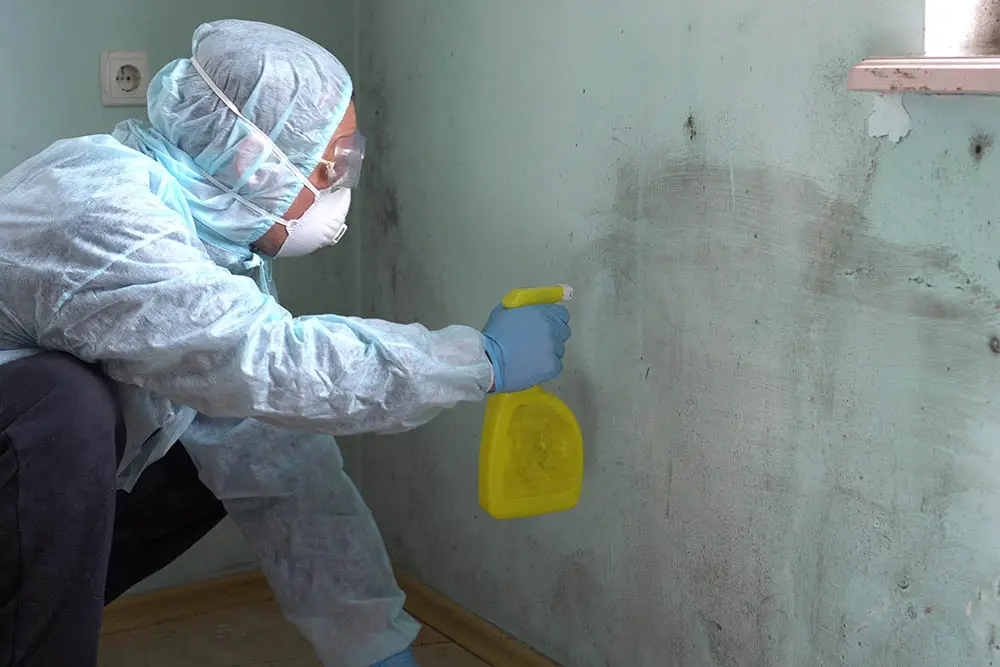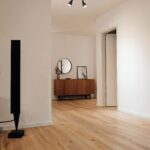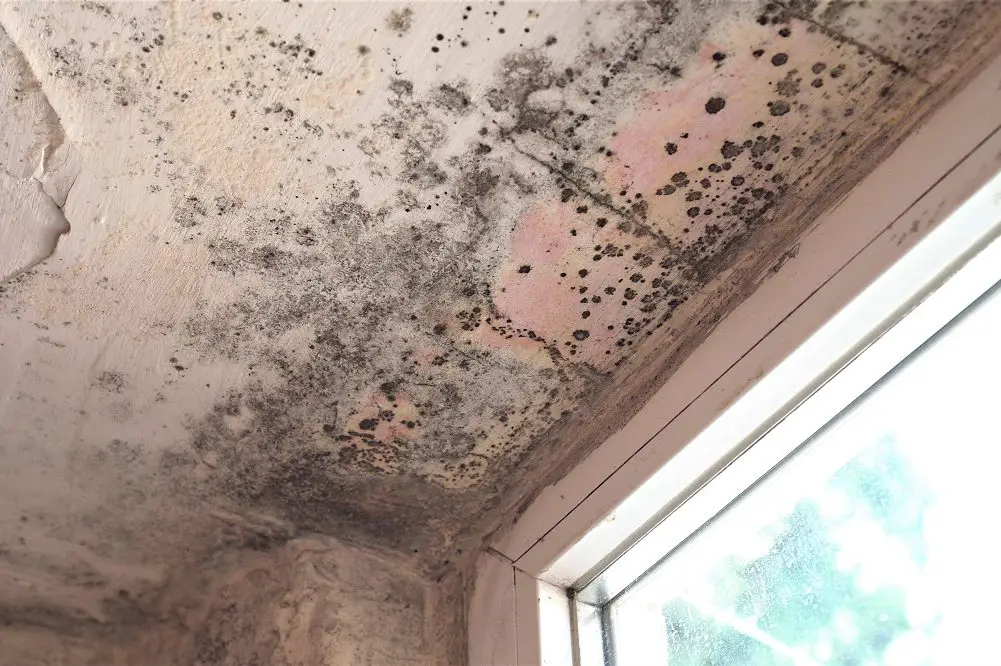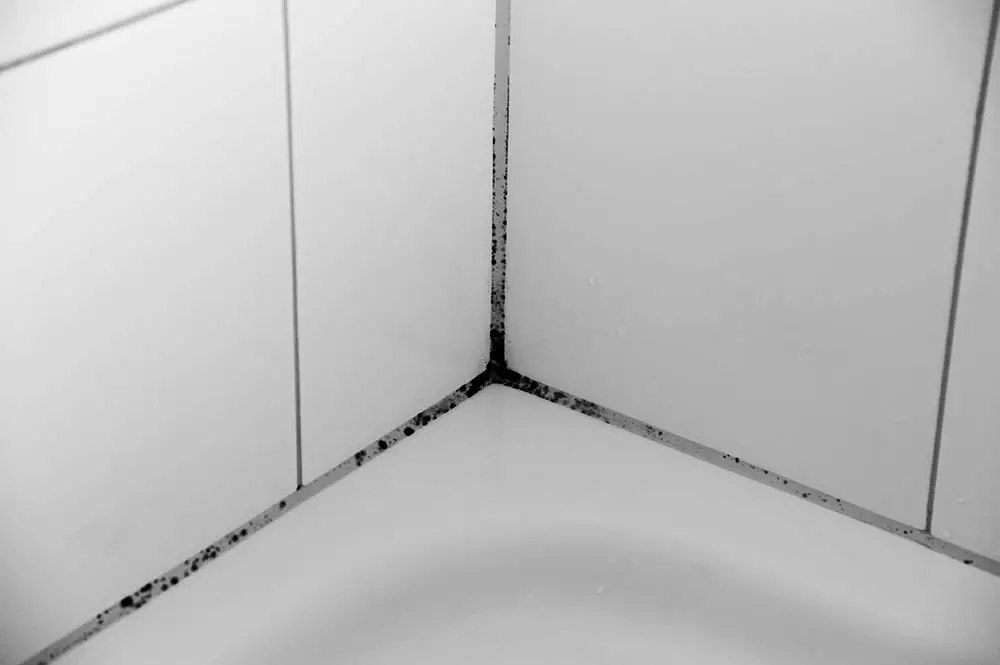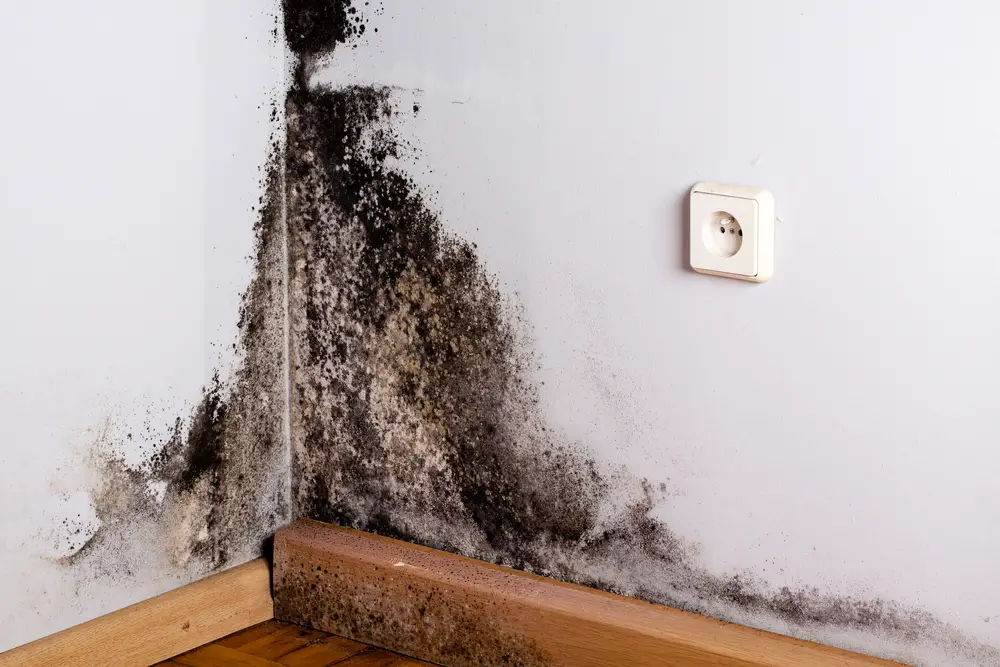Mold anywhere can be unsightly and unpleasant to deal with – whether it’s on your walls or on your shower curtain.
But if you start noticing fuzzy white marks on your floor, it could be a sign of mold growing underneath, which can not only be time-consuming to deal with but can even impact your health. We know what you’re thinking, is mold under flooring dangerous? Well, let’s find out!
Mold spores can grow into a large colony within days. If the spores spread and become airborne, they can cause respiratory issues in both people and pets.
Whether the mold is inside your walls or underneath your floorboards, it can cause severe reactions in some people. While some may not react to mold at all, others may experience irritability in their eyes, skin, throat, and lungs, cold-like symptoms, and even headaches.
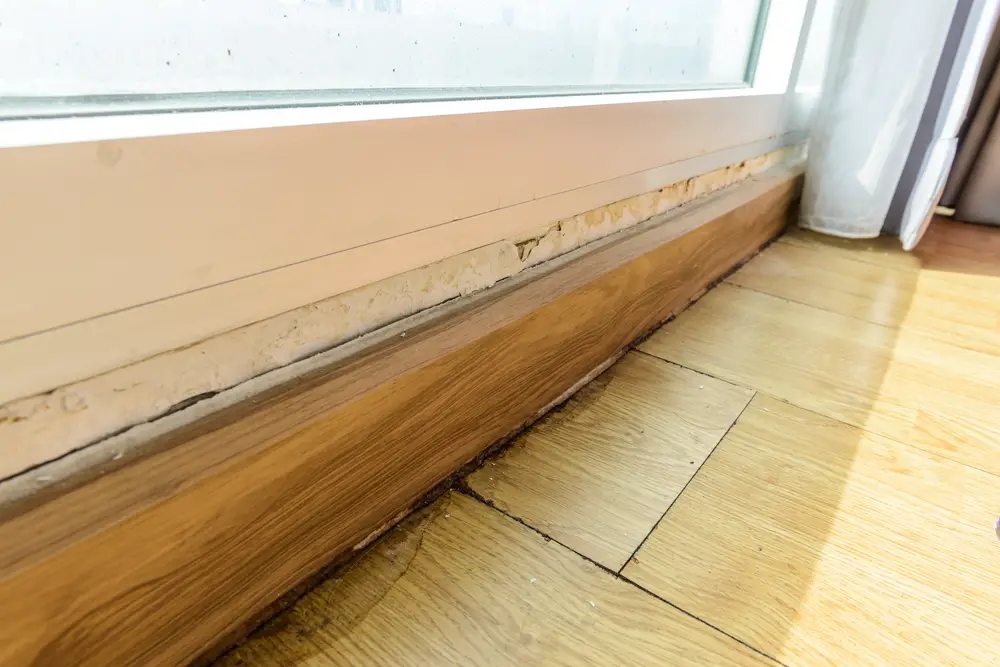
Not all types of mold are dangerous, but the black or green varieties can produce toxins – so these carry more health risks.
Mold can also damage your wood flooring, vinyl flooring, sub-floors, baseboards and drywall, and anything else it settles upon.
What does mold look like on hardwood floors?
On hardwood floors, mold usually appears as a discoloration, stain, or fuzzy growth on the surface.
It can appear in a variety of colors: be it black, white, green, gray, brown, or yellow, and it often grows in areas that have been exposed to water, leaks, or moisture in general. You can also recognize mold by its distinctive musty smell.
If you experience this smell in your home, you should examine the flooring and walls that are most prone to moisture and water. Particularly bathrooms, around sinks, under carpets, kitchen cabinets, basements, and of course, any water appliances.
If your hardwood floors or baseboards have been damaged by water – such as a leak or a flood – it can develop mold, which will usually cause the wood to deteriorate and warp.
This is why it’s really important to take care when you clean hardwood floors – especially if using water-based cleaners. You should always make sure you dry off any excess product or water, and you should steer clear of water-based methods completely.
What to do if you find mold on your floor
When it comes to any kind of mold, you want to nip it in the bud as soon as possible.
However, while it’s important to remove the mold and clean the infected area, it’s even more vital that you find out what caused the mold in the first place, and either repair this water damage – or find a way to keep moisture at bay.
If the cause of your mold is leakage or a spill, you need to fix it before you proceed with the removal.
Once you’ve fixed the leak, you’ll then need to consider how much of your floor is damaged, and to what extent.
If the entire floor is affected, you will have to consult a wood flooring expert who may recommend refinishing, replacing the floorboards, or removing the mold.
Small spots of mold are a little easier to manage, however, as these can be removed by cleaning the area, which we explain below.
How to remove mold from wood floors
First up, you’ll need to take safety precautions by wearing a mask and wearing gloves. You will also need:
- Distilled white vinegar
- Water
- Paper towels
- Spray bottle
- Vacuum
- Aerate the room
First of all, you should open all of the windows and doors in the area to ventilate the room and drive out any excess moisture. This will also reduce the risk of you inhaling spores.
- Apply a vinegar and water solution
Next, mix ¼ cup of distilled white vinegar with 1 cup of water in a spray bottle, then spray the mold with the mixture and cover the area with paper towels. Vinegar should kill the mold, and will also deal with the musty smell.
- Clean the spot
Using the paper towels, remove the mold and dispose of the towels immediately.
You may need a sponge to scrub off stubborn mold stains, followed by a damp paper towel to remove the cleaning solution. Then dry out the area with a towel.
You should bear in mind that the vinegar and water solution can damage wood floors if you leave it on too long, so be sure to dry it quickly after applying.
- Vacuum the area
Once the mold is removed, use a vacuum cleaner that’s safe for use on hardwood floors to clean the entire room. This removes any remaining spores and debris. You may also want to deep clean the area with your usual cleaner afterward.
You should dispose of the used paper towels and the content of the vacuum cleaner and ensure the trash bag is sealed and removed from your home.
Going forward
To prevent the mold from occurring again, keep the room as dry as possible, and use a humidifier if required.
If the mold recurs, it means it’s growing under the floorboards, and this is more of an issue. In this case, you’ll need an expert to remove the boards, kill the mold, then reinstall your floorboards.

